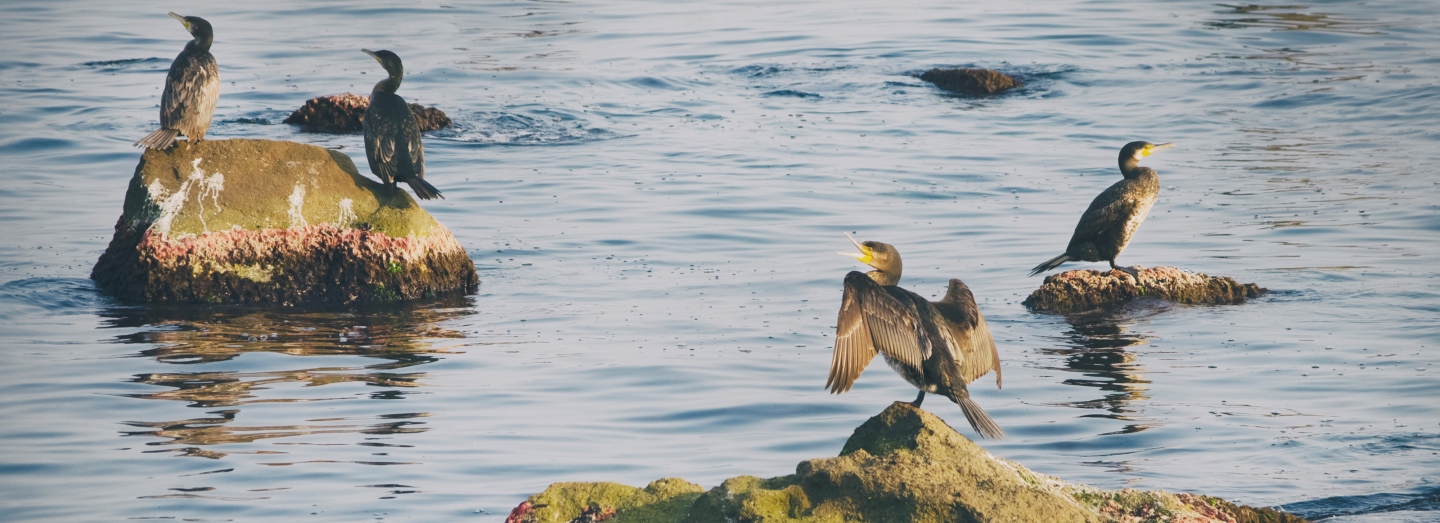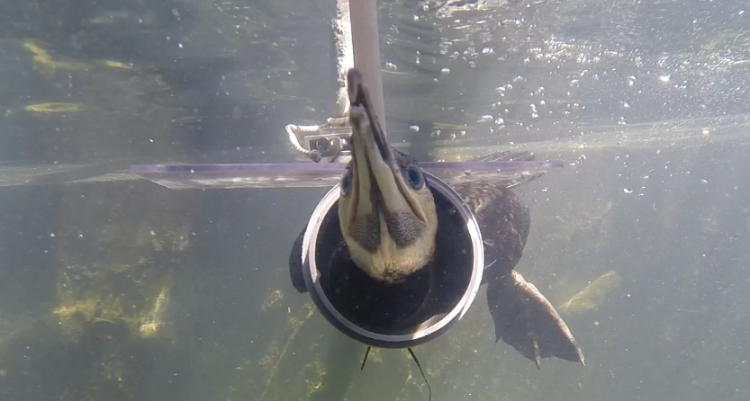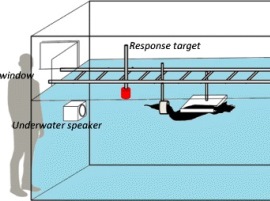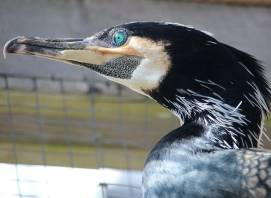
New discovery: Cormorants can hear under water
For the first time, researchers have shown that a marine birds can hear under water. This offers new possibilities for the protection of marine birds in trafficked waters.
Seals, whales and other marine animals can hear under water. The cormorant also has this ability, which new research from SDU shows.
According to the biologists it makes good sense, that cormorants can hear under water – the environment where it finds most of its food.
About every tenth bird species – ca. 800 species - in the world hunts under water, and it may turn out that they too can also hear under water.
The sound of fish
Researchers Kirstin Anderson Hansen, Alyssa Maxwell, Ursula Siebert, Ole Næsbye Larsen and Magnus Wahlberg from the Department of Biology at the University of Southern Denmark have tested the cormorant, Loke’s, hearing. Loke lives at SDU's marine biology research station in the Danish town Kerteminde.
- Hearing under water must be a very useful sense for cormorants. They depend on being able to find food, even if the water is not clear, or if they live in the Arctic regions where it is dark for long periods at a time, says Kirstin Hansen, PhD
Loke's hearing abilities are on a par with the hearing of the toothed whale and the seal.
The sound of humans
He can hear sounds ranging between 1 and 4 kHz, and it is in this range that fish such as sculpin and herring produce sounds. Both sculpin and herring are on the cormorant’s menu.
1 – 4 kHz is not only the range in which fish sounds are found. There are also various man-made sounds found in this range.
- Man-made sounds can disturb the ocean's animals to such an extent that they cannot find food or communicate with each other. It is a known problem for porpoises and seals for instance, and now it is also a potential problem for birds. It is certainly something that we should be more aware of, says Magnus Wahlberg, Associate Professor.

More tests
Man-made sounds can be everything from spinning wind turbines and ship traffic to water scooters and drilling platforms.
The SDU biologists are now planning more trials, and the next birds to be tested will probably be the common murres and puffins.
The study is published in The Science of Nature.
The hearing test

The experiment took place in a 4.0 x 2.5 x 1 metre water tank. An underwater speaker emitted different sounds out into the water and, every time Loke swam in the direction of the sound he was rewarded with a treat.
Meet Loke

Loke is a six-year-old cormorant (Phalacrocorax carbo), which came to the University of Southern Denmark (SDU) in 2010 together with the four-year-old female, Embla.